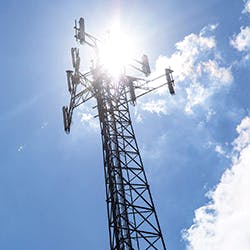Latest from 5G/6G & Fixed Wireless Access/Mobile Evolution
Prepaid – A Lifeline Alternative
Serving the Unserved or Underserved in a Different Way —
Just five years ago, we could not predict the sheer number of companies providing prepaid (and postpaid, no-contract) wireless coverage. Brick-and-mortar companies have joined in – like Verizon, AT&T, and T-Mobile – and the two-year contract is long dead.1 What’s more, customers pay approximately 21% less than they did five years ago.
With prices as low as they can go, competition is fierce. Many of the prepaid companies’ advertising messages are price-driven, and plans start at $10, unaccompanied by former pain points (such as reloading minutes and porting numbers). That’s good, because customers also expect more.
Networks, including "infrastructure MVNO" arrangements, are expanding.
Consumer expectations – and our digital culture – have transformed our industry. Today, the prepaid market is defined by more than just minutes. With unlimited talk and text available from most plans, prepaid customers now take a hard look at data. And it’s not solely how much data, but how data can be used – for example, once customers reach the limit, are they throttled? Do they face hard caps? Are hotspots included in data plans?
Perhaps some didn’t foresee the prepaid boom because they simply wrote off the service as "cheap" – which it is not, unless we’re talking about it being inexpensive. With networks expanding, signal quality is less relevant. There may be coverage limitations on a provider-by-provider basis, but there is no other discernable difference to the average consumer.
Filling In The Gaps
Now, even signal quality is less of a concern to consumers.
Customers are getting more and paying less, but we still must recognize the needs of low-income families. Lifeline companies, which supply low-income individuals and families living in America with a free cell phone and wireless service, are still going strong. But in states where Lifeline coverage is more difficult to obtain, prepaid service may fill the gaps. We welcome giving every family as many options as possible, but we must protect Lifeline from extinction.
Lifeline helps the most vulnerable in the United States – those who would not have a cell phone if it weren’t for this program. Seniors, veterans, and low-income individuals are at risk without communication tools that ensure a better quality of life (and, quite often, their safety). While naysayers might argue that prepaid wireless is already "affordable," that depends on a lot of factors, including a household’s disposable income.
Low-income customers are impacted by a number of factors and giving them provider choice (including no- and low-cost options) helps combat budgetary restrictions and access issues. Ultimately, we believe that all customers should make the calls they feel are necessary, without cutting back on other essentials.
Like this Article?
Subscribe to ISE magazine and start receiving your FREE monthly copy today!
There is a new generation of prepaid provider, one with more control over its product and image. As companies compete for space in the market, we see more attention paid to infrastructure, including prepaid companies owning and controlling their own networks. Perhaps we will see mergers of prepaid wireless companies in coming years, particularly with new "infrastructure MVNO" arrangements picking up speed.
Only time will tell. Until then, let’s continue supporting customers who need low-cost service, while providing them with the best plans, coverage, and extras we can.
Sources:
https://www.cnet.com/news/altice-offers-unlimited-mobile-phone-service-for-just-20-a-month/
https://www.nytimes.com/2019/07/26/technology/personaltech/t-mobile-sprint-merger.html







